Paris Art: A Pair of Don't-Miss Masters
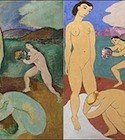
Mon 9 Apr 2012
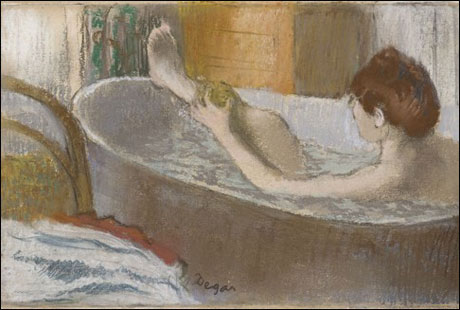
Woman in Her Bath, by Degas. All rights reserved. RMN/Musée d'Orsay.
When it comes to Paris art, blockbuster shows are daunting. But (taking care to book ahead), there are two spring expos you have to see: Matisse at the Beaubourg and Degas at the Musée d’Orsay.
“Les dames de Monsieur Degas,” as French critics have dubbed them, are a sexy bunch. One hundred seventy pastels, drawings and sculptures of women: most are in their birthday suits and performing beauty rituals. All are nude or lightly covered. Yet the hymn they offer the female body would please the most demanding feminist.
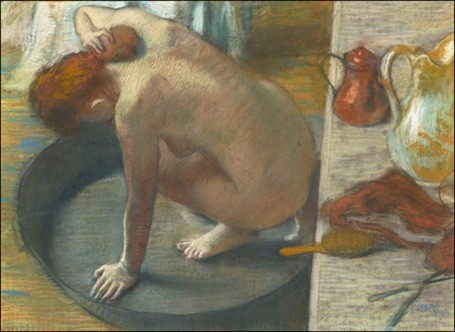
The Tub, 1886, by Degas. All rights reserved. RMN/Musée d'Orsay.
Some are prostitutes, some were paid to pose—and most of the women’s faces are averted. Yet the show vibrates with an exquisite sexuality, all the more erotic because it dates from a different era. Although central to the first wave of Impressionism, Degas scandalized many critics and some of his colleagues. The reason was provocative portraits such as these, with titles such as Crouching Woman, Seen from the Rear.
In old age, the artist felt he had been too voyeuristic, saying, “I looked perhaps too much upon women as animals.” This was a response to that conservative public who had preferred his horses and ballet scenes. Most of his unclothed females stayed a secret. Some of the pieces here were never shown in the artist’s lifetime; others have not been seen since the 1880s. Today, however, their intimate moments mesmerize.
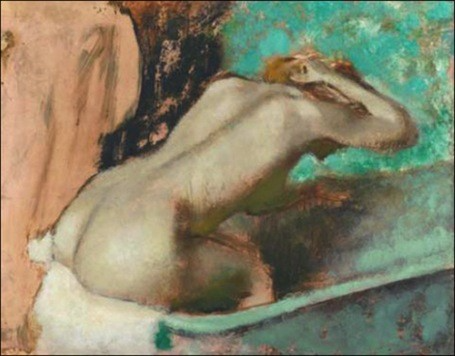
Woman Seated on Bathtub Sponging Her Neck, by Degas. All rights reserved. RMN/Musée d'Orsay.
Curator Xavier Rey worked on the show with Boston’s Museum of Fine Arts, who helped the d’Orsay originate the expo. Rey calls these ladies “the painter’s private domain.” He feels it is the nudes, more than Degas’s dancers, who reveal the essence of the artist. “It is well-known that Degas was obsessed with movement, that he wanted to capture bodies in motion. But these round girls, a little on the fleshy side, were among his truest portraits of the age. Each is both the prostitute who works and the lady of leisure.”
Some are caught in action by daylight; others by lamplight. The women are pictured lifting their hair or drying off their limbs, waiting for paying clients or slipping on undergarments. Whether in a brothel or just the boudoir, this peek at their most personal moments still feels privileged.
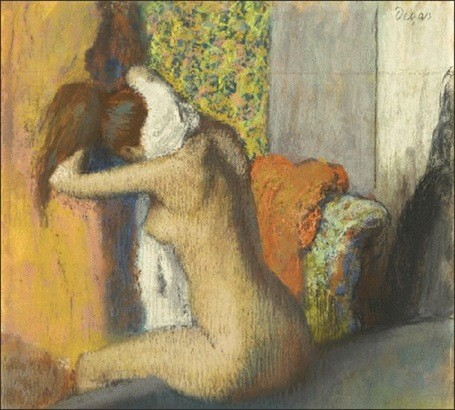
Woman Drying Her Neck after Her Bath, by Degas. All rights reserved. RMN/Musée d'Orsay.
Paris art critics have linked Degas’s nudes with Matisse, which makes a trip to “Matisse: Pairs and Series” a logical follow-up. Here, 70 works offer a well-presented odyssey through how the art giant revolutionized color and form. Starting with the unknown painter of 29, its presentation guides you through all his major eras. Since it’s Matisse, that is no small accomplishment.
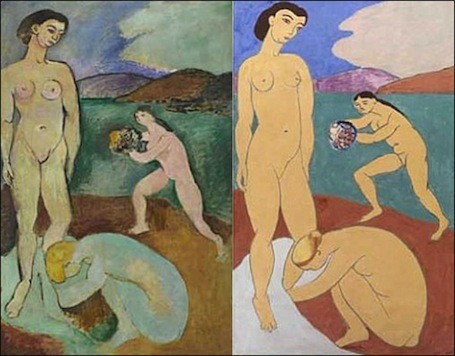
Le Luxe I and Le Luxe II, 1907, by Matisse. Courtesy Centre Georges Pompidou. All rights reserved.
The show’s trick is to compare subjects tackled more than once. Juxtaposing these revisited portraits, still lifes and landscapes builds one’s insight into how the painter “saw”—whether he was gazing into faces or at flowers. Once again, women emerge as a central subject and, once again, they are depicted through complex emotions.
Sometimes the Matisse femme is idealized; other times she is given a harsh rendition. But this kaleidoscope of a show ends on a grace note—some of the “Blue Nudes,” those wonderful paper pieces made by the old, frail Matisse.
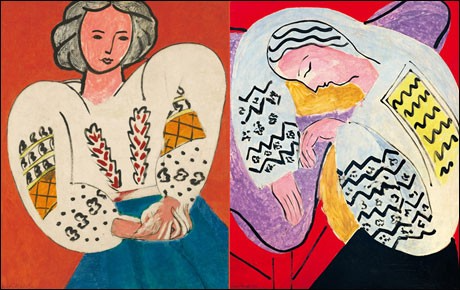
La Blouse Roumaine, 1940, and La Rêve ou La Dormeuse, 1940, by Matisse. Courtesy Centre Georges Pompidou. All rights reserved.
If you’ve ever wondered why these two painters are special, here are two shows with seductive explanations. Both are full bodied, lively and sensual, something that has locals storming their doors. Don’t let that put you off; just reserve your ticket. When it comes to spring in Paris, each is a high point.
TIP
These museums are among Paris’s busiest; each also has a wait for security checks. Book tickets in advance and get an early start—or, at Beaubourg, aim for an evening. (Every day except Tuesdays and May 1, Centre Pompidou is open until 10 p.m., although galleries start closing at 8:50 p.m.)
TIP
Do not try to “do” both shows in one day. At the Musée d’Orsay, you’ll want time to visit the stunning new Amont Pavilion. At the Pompidou, you shouldn’t miss the world-famous book and gift stores.
Related Links
Henri Matisse
Beaubourg/Centre Pompidou
Edgar Degas
Musée d’Orsay
Editor’s note: Have you signed up for our free bimonthly newsletter yet?